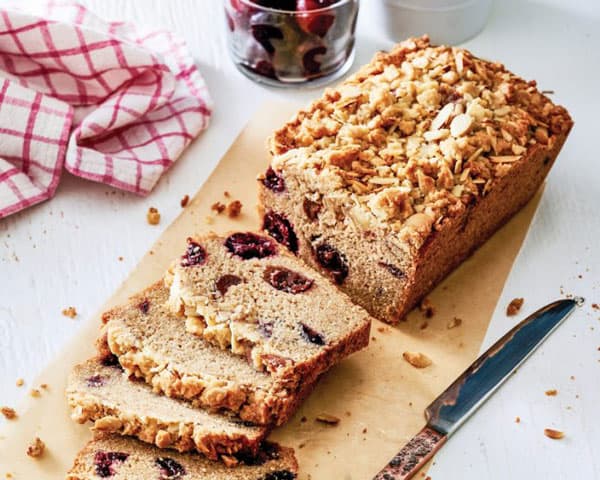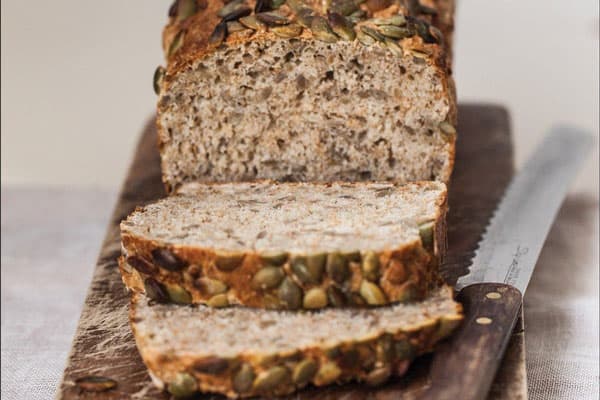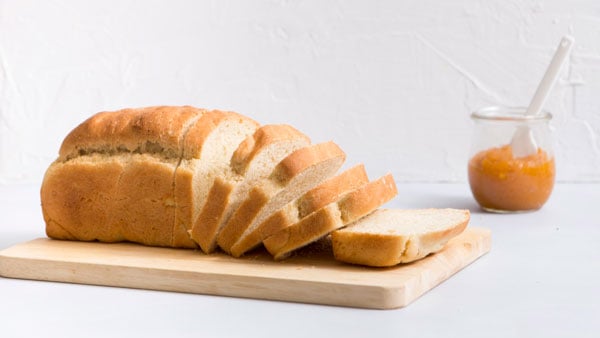If you are to compare the time our grandparents used to spend on cooking and preparing daily meals, it would seem quite overwhelming. We, as busy people, don’t have much time to take hassles of cooking that requires a few hours or even more.
Our faster-paced urban lifestyle presents us with a handful of easy and quick to make foods that both save time and effort. Quick bread is one of those solutions to feed the hunger without doing much. If you don’t know what is a quick bread, and how to make it? I will introduce you to this great time-saving recipe.
Now, What Is Quick Bread?
The name is pretty much self-explanatory, but still, it seems a bit difficult to get the entire picture regarding how it’s made, what differences it has from a regular bread, etc.
Obviously, it’s a bread, which is easy and much quicker to bake. The bread pretty much resembles flatbreads that are made of flour, water, and salt, the most common ingredients for making bread.
Some of you might be wondering how it can be called a bread without eggs or yeast? Well, you don’t even need to leaven the batter or dough to make this particular bread. I know this sounds crazy. Allow me to elaborate a bit more.

Quick bread recipe requires you to use safe to consume chemical leavening agents. These take care of rising and aeration in the bread. Unlike regular batter with eggs and yeast, these food-safe leavening agents don’t require much time for fermentation.
You will be able to make a quick bread even before you bake the dough or batter.
Like quick bread, you can also make quick cakes, cookies, and biscuits of both sweet and savory taste. This baking technique meets the fast-paced day-to-day requirements of preparing food while spending minimal possible time, and eating right away.
Unlike typical fast-foods, having quick bread is a comparatively healthier option. If your busyness doesn’t allow you to spend much time preparing meals, here are quick and easy to make recipes for you.
When Did People Discover Quick Breads?
Traditionally, bakers only relied upon eggs or yeast in order to leaven their bakery product be it bread, cookies, biscuits, cookies, and so on.
Considering bulk production, yeast takes too much time to multiply, ferment the particular dough requires for the product, and produce necessary carbon dioxide in enough amounts. All these processes are to force the bread to rise.
Despite being a recipe, this food making process is quite temperamental as well as sensitive for the nearby environment. Weather temperature, as well as humidity, have great influence over the fermentation and the quality of bread.
For such reasons, the quality wasn’t consistent. Breads that are made on Sunday highly differ from bread that is made on Monday due to weather issues and the quality of the ingredients.

In the middle of the 19th century, when baking soda and baking powder formulas were discovered, the fermentation process changed significantly. These are also chemical leavening agents that produce carbon dioxide much faster than the age-old traditional way.
As the gas was produced instantly, it drastically cut the waiting time as well as eliminated fermentation. Apart from that time thing, the results or taste of the products was quite consistent. As synthetic chemicals are easier to control, bakers could rely on these chemicals.
Following the development, today, our baking tradition has changed due to chemical leavening agents. Even though a huge number of people still prefer the age-old egg and yeast way for baking bread, other baked products such as cakes, biscuits, and cookies are made following the technique of “quick bread”
What’s the Difference Between Quick Bread and Yeasted Bread?
Now, you have known that the making processes of quick and yeasted bread aren’t the same. Even though quick bread is super fast and convenient to make, it comes with some disadvantages that give the upper hand to the yeasted version of bread.
Quick Bread
This fast baking technique forces you to make some compromise in taste and flavor. Although yeasted bread requires a long time to ferment and bake, when it comes to taste, people always prefer having these breads without giving a second thought.
So in nutshell, quick breads are easier to make, don’t take too long to bake, and taste pretty much the same all the time. With little planning and minimum effort, you can make quick bread to fill your hunger within the shortest possible time.
This doesn’t have anything to do with the environment. Whether it’s high humid or low, you get consistent taste and quality. Following the same technique, you can bake unique bakery products using different ingredients and flours to add variety in your cooking.
Again, the taste and aroma will not be as satisfactory as yeasted breads.
Yeasted Bread
Don’t underestimate yeasted ones. Its fermentation process takes longer, but you can add great flavor to the dough, break down starches of sugars, and add many organic products or ingredients. In results, yeasted breads are denser when it comes to nutrients.

Also, its satisfying texture is something you will not be able to produce in quick breads. As it takes quite a long time to bake, the baker has more control over the recipe. If anything goes wrong, the baker can quickly fix it without any issue, which is something you cannot do in quicker ones.
You will be able to get a great airy rise in the dough with firm gluten, which is the topmost reason why people bake these breads even today.
So, if nutrition is your prime concern, and you have plenty of time to do it yourself, yeasted bread is the option to go with.
Breaking Down the Chemistry Behind Quick Bread
Quick bread making process includes reactions of a weak acid as well as a weak base. With the presence of water, these reactions produce carbon dioxide, which creates a light, fluffy, and porous structure. Weak bases require leavening agents such as potassium bicarbonate, sodium bicarbonate, and ammonium bicarbonate.
On the other hand, weak acids include citric acid (can be in lemon, orange juice, or in a chemical form), tartaric acid, which is also known as tartar cream.
As baking soda is sodium bicarbonate, it requires an acidic ingredient to produce a proper reaction. Baking powder includes dried forms of a weak acid as well as a weak base.
So, it only requires some moisture to start reacting. Bakers use potato starch or cornstarch as moisture in the mixture for bulking it out.
Things That Requires Attention to Make Quick Bread
As soon as you mix the reactants with a liquid, the reaction occurs. Since these reactants are very limited, they will cease the production of carbon dioxide if the supplies are exhausted.
Quick breads don’t have as strong gluten structure as yeasted breads,; if you don’t place the dough in the proper place, the carbon dioxide gas will be lost. So, it requires the baker to place the dough in the oven quickly.
That’s the reason why the baker needs to take two bowls, one with dry ingredients, and another with liquid ingredients. Combining them at the last minute before placing them into the oven is much more convenient.
Additional dry ingredients such as sugar, whisked eggs, creamed butter, etc. should be prepared separately and then mixed with the dry ingredients.
No matter which mixing method the baker prefers, it’s recommended not to over-mix the dough or batter to preserve as much gas inside it.
Some Classic Quick Breads
You can try baking banana quick bread, especially if you like cake-like texture in your bread. Soda bread is another option, which is quite similar to traditional wheat loaf. Along with the baking soda, you can also use buttermilk for baking the bread.
Combining Yeast and Quick Bread
I was wondering whether there is a way to get the nutrition and flavor from the yeast and also about a speedy process of making quick bread.
Luckily, I found that English crumpets require yeasted dough for rising and baking powder to produce a porous and spongy texture. The recipe doesn’t require any oven. You need a pan where you spread some butter to prepare this quick yet nutrition enriched bread.
Final Words
Most people that eat commercial breads that are baked following the quick bread making procedures don’t even know what is a quick bread. Quick bread has created some endless possibilities for both home bakers and professionals to add more twist in their recipe and enhance productivity.

